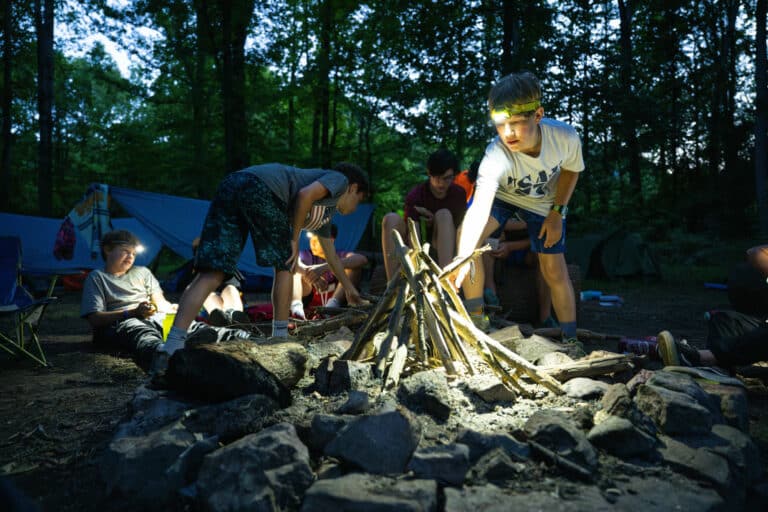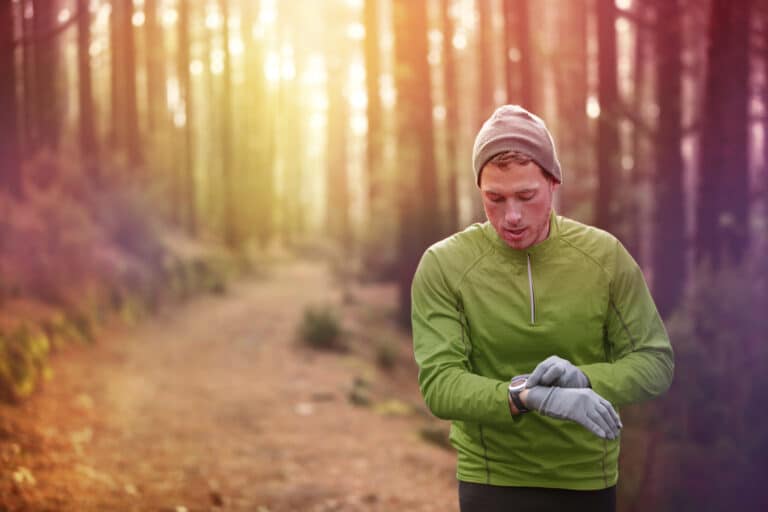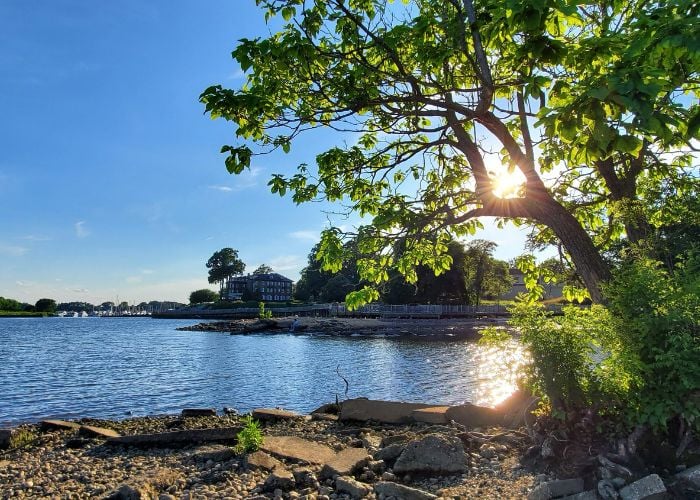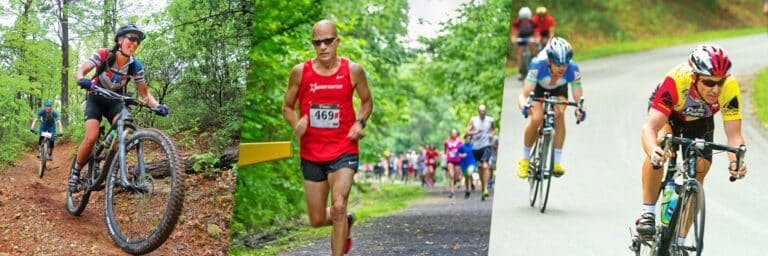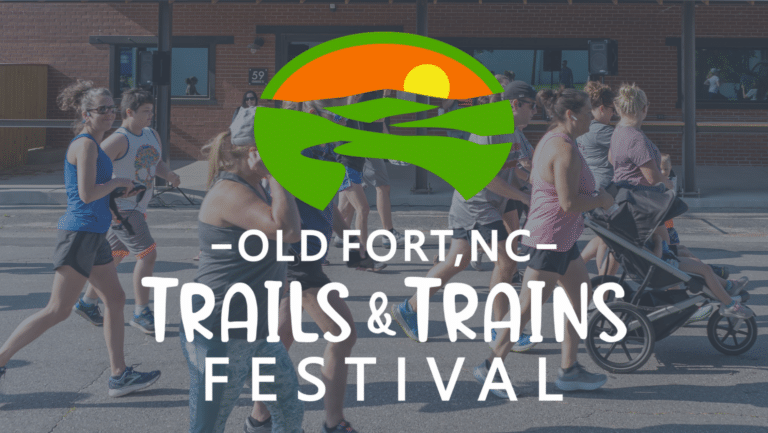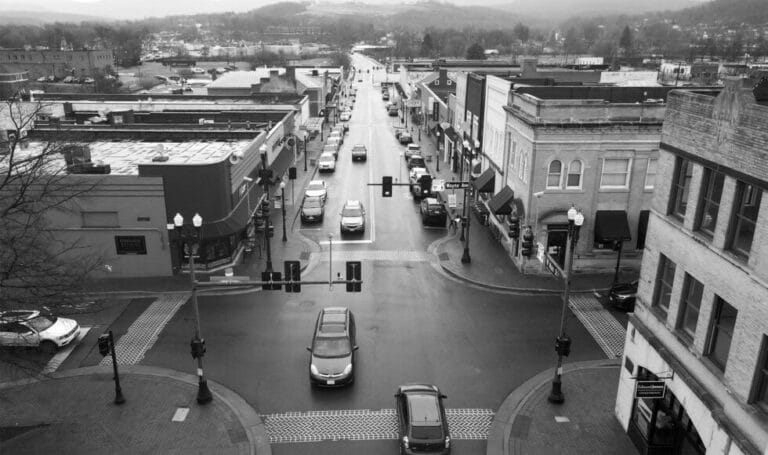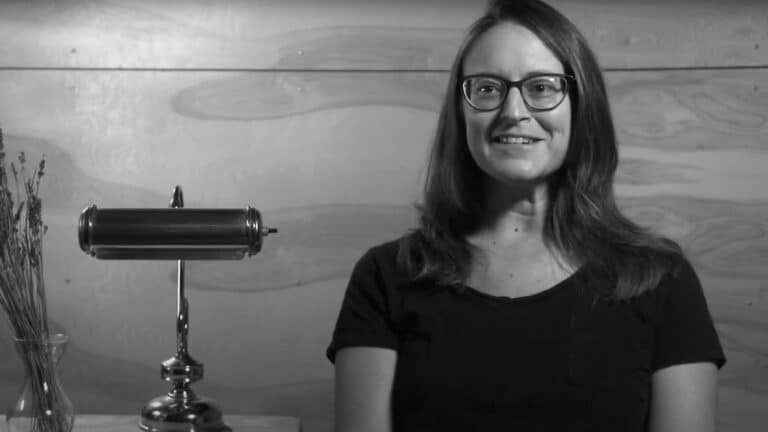It’s midnight, I’m in the middle of Great Smoky Mountains National Park, and I can’t breathe. I can’t see because it’s too dark. I just spooked a bear by stumbling through the woods blindly, and I’m worried I’m going to come across another one.
My immediate goal is to find the Spence Field Shelter, but I can’t read my map or the trail signs. Even when I try to Braille-read the wood-carved trail signs using my fingers, I don’t feel any letters that spell ‘shelter.’ So I blindly wander the Appalachian Trail searching for the shelter, but no luck. For the first time, I realize that I could be in a bit of trouble. Exasperated and still hyperventilating every hundred yards or so, I sit down in the trail to catch my breath.
I’m attempting to complete a 72-mile run across the Smokies in order to raise awareness for the poor air quality that plagues the nation’s most visited national park. The first half of the run went smoothly—difficult, but no unforeseen problems. Then at mile 35 I started feeling lightheaded and I noticed my breathing was shallow. It hurt to breathe in deeply. I kept going, thinking it was the high elevation causing the trouble in my lungs, but the more I ran, the worse my breathing problems became.
Later, I discovered that the Smokies’ air pollution readings registered in the red alert zone that day—it’s literally unsafe to breathe in our nation’s most visited national park.
Stumbling in the darkness, I spread out my map before me and hope that perhaps my eyes will adjust. After five minutes, I still can’t see anything. My sweat-heavy shorts and shirt stick to my body, and I’m starting to shiver in the cold night air.
Why didn’t I bring my headlamp? Why didn’t I bring matches or a light source? What was I thinking?
Somewhere, in the dark recesses of my oxygen-starved brain, a light goes on—actually, more of a phosphorescent glow. I suddenly remember that I packed a watch with an Indiglo light button. I dig through my pack, find my watch, and use the Indiglo illumination to read the map. The shelter I’m searching for—and a nearby spring—are a quarter-mile away on a side trail.
I hobble to the shelter and collapse on the dirt floor. After a few hours, my breathing begins to slow down. At the first blush of twilight, I begin running again, and fortunately my breathing has returned to normal (air pollution levels dissipate during the night). I’m able to finish the run across the Smokies…but what if I hadn’t found the shelter? What if I hadn’t remembered the watch with the tiny light?
Anything can happen in the wilderness, even here, in the supposedly tame Southern Appalachians. Nobody knows this better than our readers, who spend a good bit of time stomping through the steeps. BRO has collected some of your own harrowing tales from the trail, as well as advice from the region’s leading experts in wilderness survival.
—Will Harlan
———-
This Isn’t the Piney, Is It, Dad?
—Lauren Burress
I am an 11-year-old whitewater paddler. My dad and I are known to paddle tough mountain creeks throughout Eastern Tennessee. Last winter, it rained all night, and when we checked the online rain gauge the next morning, we saw that the Piney River was running. The Piney is only a few miles from my dad’s work, so he took the day off. We packed our gear and headed for the river. We had our directions and were on our way when we saw some kayakers’ cars at another river. We still followed our directions to the put-in for the Piney. It had no paddlers’ cars, so we questioned whether we were at the Piney or not. We turned around and headed for the other creek we saw with the cars. This looked like the Piney, so we put in and headed down.
It immediately went into a class III rapid. For the next 3-4 miles it was fun class IV water. Then we heard a huge rapid. We got out to scout on the river left side and saw there was a huge sieve in the middle of the rapid. It was definitely not runnable. We looked for a good spot downriver to put in afterwards, and started paddling again, only to come to another unnavigable dropoff. We ended up having to walk a lot of rapids because of sieves or other big dangers. Eventually it started getting dark because we had to portage so much. And then we were getting tired from walking too much. So we stashed our boats, and started the treacherous walk out from the creek.
We would have been able to start a fire and paddle out the next morning if we had our safety packs with us, but they had been soaked two months ago and we hadn’t remade them yet. That was a big mistake. So we were hiking out in pitch black, with only our paddles to feel around with. It was getting cold, too.
“Hey Lauren, give me some of that Gatorade,” Dad said.
“Um…. Dad, the Gatorade is back at the boat.” We had left the Gatorade and dried pineapples in a dry bag in the boats.
“Forget it,” Dad said. “We have to find our way out of here and we don’t have the time to go back.”
We walked and talked, until my dad noticed the river was flowing in the other direction. So we backtracked and crossed a wide tributary. We were getting really tired and our legs wouldn’t work any longer. We had to take a break.
We were cold and wet, so we slipped into a crevice of a rock and covered up with dry leaves to insulate our bodies. But we couldn’t stay there for very long because we were shivering too much. So we walked some more until we got tired again. We walked every 20 minutes or so, then rested. Finally we bedded down in a place where we kept kind of warm—well, warm enough to sleep a bit.
By this time, my mom had called Search and Rescue, which hiked through the night looking for us.
The next morning, we found a trail and followed it hoping it would lead to a forest station or some type of civilization. It eventually lead to an old logging road that looked like it would go on forever. After about an hour and a half on the logging road, we saw some hunters up in a deer stand. We asked if they had any spare water and they threw some down for us. They asked what we were doing out there, and we told them the short version. They asked if we would like a pop tart or peanut butter crackers, and we said both.
They offered to take us home or to the nearest restaurant, and we asked them to take us to a local restaurant. We used their cell phone to call my Mom and told her we were okay. The hunters asked if they could get a picture of us for their scrap book. We said, “Yeah, it’s the least we can do.”
Lauren and her dad never paddle without their emergency kits any more.
———-
Bearly Made It
—Glenn Fleagle
I was thru-hiking the A.T. when I was charged by a black bear in Shenandoah National Park. It was early in the morning, and I had left the shelter before the other hikers had woken. After hiking north for a few miles, I rounded a corner and saw a mother bear with two cubs, eating berries from a bush next to the trail. I stopped and stepped to the side of the trail to watch the scene.
I had about ten seconds of observing before mama bear looked up and spotted me. She immediately gave a snorting signal that got her cubs’ attention. The cubs took off running as fast as their little legs would take them. One ran away from me, but the other one ran straight up the trail towards me. It looked very panicked and still had not spotted me.
The mother bear followed her cub in my direction. I stepped into the trail so the cub would see me. The cub spotted me when it was about 25 feet away and went into the woods and climbed a tree close by, but the mom kept coming.
I had to think quickly. I’ve hiked in grizzly bear country and mountain lion country and knew the different things you were “supposed to do.” For griz, you play dead. For mountain lion, you fight back. For black bears, you are supposed to not show fear and not show aggression. It’s very difficult to be standing on the trail, by yourself, with a charging bear protecting its cubs and not show any fear. Believe me, there was fear going on. I thought this might be the end. I knew I couldn’t outrun it and if I tried, it would catch me. So I did the proper thing and stood there. I started talking to her, saying, “I didn’t do anything. I’m just hiking, not bothering you.”
Time slowed down as the mama bear kept coming toward me. When she got about eight feet away, she stopped, stood up on her hind legs, making her the same height as me, and growled, showing her teeth. I stood my ground and kept talking and tried to not shake with fear.
The baby cubs were both crying at this point, causing the mom to turn around and get back on all fours. She went to comfort one of her cubs, giving me a chance to back up slowly. Then she charged me again.
She stopped about eight feet away again and stood up and roared while turning her head from side to side. I continued to tell her I hadn’t done anything and didn’t intend to.
The mama bear backed away again to tend to her cubs, and I started backing away slowly, but the mama bear came at me a third time. The fear was in me big time. But the cubs’ crying overwhelmed her again and I got my chance. I took off running as soon as I was out of her sight and went back about a mile before I stopped and tried to figure out what I was going to do. I had to keep going north, but there was no way I wanted to have another encounter.
I got out my map and saw the Blue Ridge Parkway was a half-mile away. I bushwhacked to the Parkway, following the road until the A.T. crossed it five miles to the north, and continued my thru-hike.
Glenn Fleagle is a veteran long-trail hiker, having hiked the A.T. three times. Fleagle has seen bears hundreds of times, but this was the only time he’s ever been charged.
———-
This Sucks
—Maria Higgins
I was hiking a particularly muddy section of the A.T. on Mount Success, New Hampshire. Wooden planks had been placed along the trail so hikers could cross the mud without doing more damage. I was walking across one of the planks when I noticed the end apparently submerged in thick mud. Actually, the end was missing. When I stepped where I thought the end of the plank was, I plunged quickly to the bottom of a mud hole.
I have a 34-inch inseam, and my entire leg was submerged. I initially thought it was quicksand, so I tried to move my butt laterally onto the end of the plank. Then I realized that it was not quicksand because I had hit a solid bottom.
I was hiking alone and the mud had my leg and boot held fast. I was on my third day of a 35-mile section of the A.T., hiking south over tough terrain, so I was already fatigued when I found myself alone, stuck in a mud hole on top of a mountain.
It happened so fast, I didn’t have time to be scared or panic. Still, it took me several minutes and all my strength to get my leg out of the mud hole. It shook me up. If I couldn’t have gotten my leg out, I would have been stuck there until someone found me. It would have been uncomfortable and cold, but I had access to my gear, so I would have been okay. The scariest thing is that I had never considered this as a danger.
Maria Higgins’ best advice for hikers is to never hike alone. Higgins does not follow her own advice.
———-
Mountaintop Madness
—Lauralee Bliss
My husband, my 14-year old son, and I were hiking the Presidential Range of the White Mountains of New Hampshire—an above-tree-line adventure cherished by East Coast backpackers. The rough rocks and boulders give the mountain ridges a moon-like feel, but weather moves in fast in the high elevations, and the largely exposed nature of the Presidential ridgeline makes the sudden storms deadly. Roughly 30 people have died of hypothermia in the White Mountains of New Hampshire in the last 100 years—a death rate that rivals Mount Everest.
We had summited Mount Washington earlier in the day. On our descent, we noticed clouds rolling in. Not long after came the sound of thunder booming like a volley of cannon. Then followed the lightning that struck the ground close by. Here we were above treeline, exposed in the fragile alpine zone.
As the thunder clapped and the rain poured, we continued hiking, only my son hadn’t put on his rain gear. The winds were reaching 30 miles per hour, the temperature dropped, and inexplicably, my son decided to wander off trail. After a quick search, we found our son sitting on a rock, mumbling to himself.
“Just leave me here. I can’t hike,” he said. “I’m gonna stay right here. You go on without me.”
It took us a few minutes to realize our son wasn’t being obstinate—he was hypothermic. I had never witnessed the symptoms before. My son had a prime case of the ‘umbles (stumbles, mumbles, fumbles, grumbles). My husband realized what was happening and stripped off my son’s drenched T-shirt and gave him his warm, long sleeve shirt to wear. I gave him my rain jacket. Immediately, the “umbles” vanished, and he was lucid and ready to hike.
We bailed from our original hike, taking a more direct trail off the ridgeline into the valley, where we set up camp and dried ourselves off. It wasn’t until I arrived home and read up on hypothermia that I realized the dangerous situation we had experienced above treeline. It was a wake-up call. Hypothermia can strike even in the summer.
Lauralee Bliss later completed a lifelong dream of hiking the entire Appalachian Trail in 2007, accompanied by her son, Joshua.
———-
Rescue Insights
Craig Bannerman, former president of the National Association of Search and Rescue and current Deputy Chief at Black Mountain Search and Rescue in Western North Carolina, has spent 20 years executing wilderness search and rescues.
BRO: Your rescue unit is responsible for some of the most rugged mountains in Western North Carolina. What sort of calls do you receive?
Bannerman: We get a lot of calls from people who are injured, but more from people who have misplaced themselves, or are too ambitious with their outing. They think they can do more than they can. Six miles in the mountains isn’t the same as six miles on flat land.
BRO: What is the most common reason for a rescue?
Bannerman: People going into the woods without enough knowledge of the area. No maps, no compasses, nothing. And even if they do have a map, they don’t have the skills to read it.
BRO: What do you think of the recent prevalence of personal locator beacons like The Spot?
Bannerman: The Spot is a double-edged sword. It gives people a sense of security based on what they see on TV, as opposed to what they’re going to come across in real life. But we’re also seeing some abuse of it initially. People are using it just because they can.
BRO: But these new technologies must make rescues easier.
Bannerman: We’re definitely seeing a change in our response because of cell phones and GPS. With phones now, the coverage keeps expanding. You can call 911 and be triangulated through satellites. Or, if we can talk to the person, we can often help them get out themselves. Ultimately, though, people have to rely on something besides technology to get them through the wilderness.
BRO: Best advice for backpackers?
Bannerman: Understand what you’re getting ready to do. Take enough water and food and clothing and gear so that you can at least take care of yourself for 12 to 24 hours. You’d be amazed at the people we see who walk from 2,000 feet to 6,000 feet with nothing but a water bottle, wearing shorts and tennis shoes.
BRO: Second best piece of advice for backpackers?
Bannerman: Tell someone where you’re going. If we can talk to a family member who knows the hiker’s basic itinerary, we can figure out where that hiker is likely going to be.
BRO: What should we do if we get lost?
Bannerman: Most of the time, it’s better to stay put. Find some sort of shelter and sit down. At the very least, taking that break lets you stop long enough to recognize your surroundings and gives you time to start thinking straight. We call it S.T.O.P.: Sit, Think, Observe, Plan. That’s the best thing for you to do when you’re lost. We’re a lot more likely to find someone who’s not moving, especially at night. You don’t want to start wandering off in the woods in the dark when you don’t know where you are.
———-
—Justin Padgett, executive director of Landmark Learning
———-
• Compass
• Flashlight/headlamp (be sure to have an extra set of batteries that fit your flashlight/headlamp)
• Extra food (enough for one extra day)
• Extra clothing
• Rain gear (always carry rain gear even if the sun is out)
• First aid supplies (be sure to include an extra day of any medication you are taking or might need in an emergency)
• Pocket knife
• Matches (stored in a water-tight container in addition to matches or a butane lighter)
• Fire starter (can be candles, chemical fire starter, or backpack-sized fire logs)

